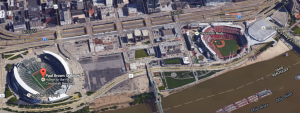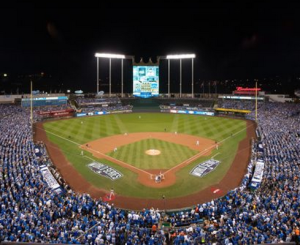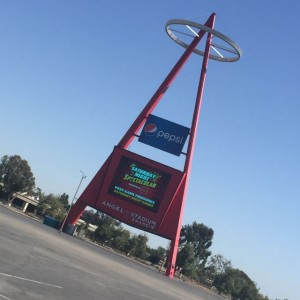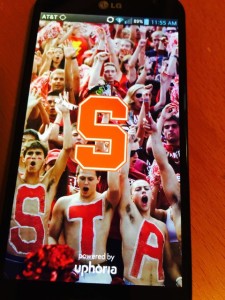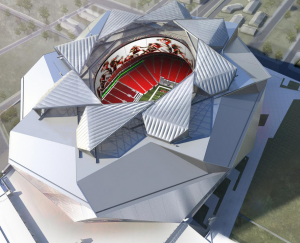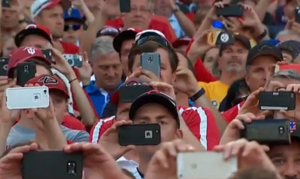
Fans at All-Star Game taking pictures of Pete Rose. Photo: Screenshot courtesy Fox Sports/Cincinnati Reds
Though it only came online a couple weeks before the big event, the GABP Wi-Fi network held up admirably for the big game, carrying 2.36 TB during Tuesday night’s main event, according to Brian Keys, vice president of technology for the Cincinnati Reds. Almost another 2 TB was recorded during the ancillary events, the futures game and the Home Run Derby, proving once again that “big event” crowds like their Wi-Fi and are adept and finding and using in-stadium wireless networks. We don’t have DAS stats yet but it’s an easy guess that all four DAS deployments inside the stadium also carried significant traffic loads during the All-Star activities.
In a phone interview Friday, Keys said that the peak concurrent Wi-Fi user number hit 9,700 at one point during the actual All-Star Game, with a total of 12,000 unique Wi-Fi connections over all of Tuesday night. And even though the game attracts a national audience, the hometown fans provided the biggest traffic surges during Cincinnati Reds-specific moments — like at the end of Monday’s Home Run Derby when local hero Todd Frazier won in dramatic fashion, and when former Reds star Pete Rose had a brief pre-game introduction.
“Especially when Todd [Frazier] got up to bat, that really tested the limits of our [bandwidth] pipe,” Keys said. The Rose introduction, he said, put similar stress on the 576 Wi-Fi access points, but with Keys’ staff as well as a special group from Wi-Fi gear provider Cisco on hand to help out, the new network performed in big-league fashion, Keys said.
During construction, the IT team had to overcome one structural hurdle, namely the lack of any railings in the lower bowl to mount Wi-Fi APs on. Keys said some of that was solved by putting APs at the bottom of seating rows pointing up, and using overhang space for other antenna mounts. The Great American Ball Park did not use any under-seat APs, Keys said.
Though the ballpark had explored putting Wi-Fi in last season, the initial deployment was stalled last summer due to what Keys called contract issues. But with the All-Star game coming this season, the park re-started its Wi-Fi deployment, which was part of the Major League Baseball Advanced Media (MLBAM) plan to bring Wi-Fi to all parks for this season. Keys said the new network deployment began in March and finished up on June 26, giving his team a few home dates to kick the tires and tune it up quickly for its big event.Going forward, Keys said the four-DAS deployment — with four sets of antennas and four different headends — will be consolidated into a single, neutral host DAS operation. Keys is also looking forward to adding features enabled by the Wi-Fi network, like expanded food ordering and greater use of beacon technology. “It’ll be great to add more things to improve the fan experience,” he said.

